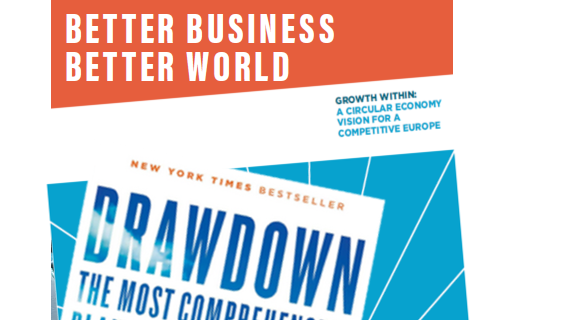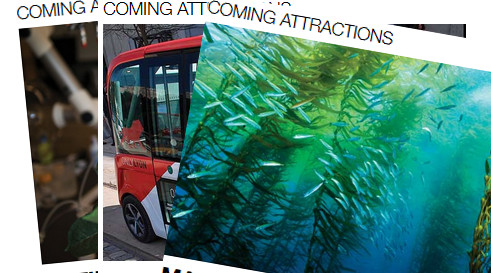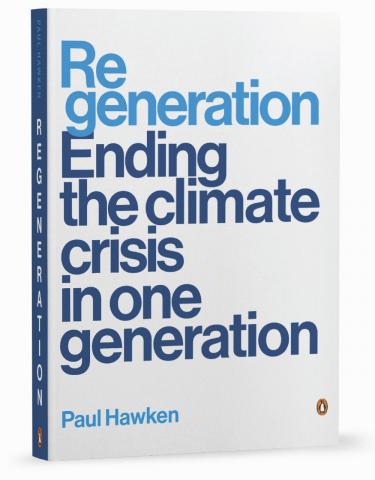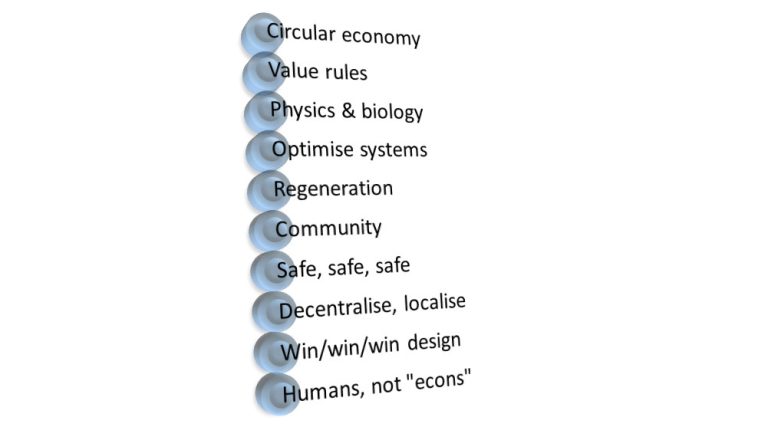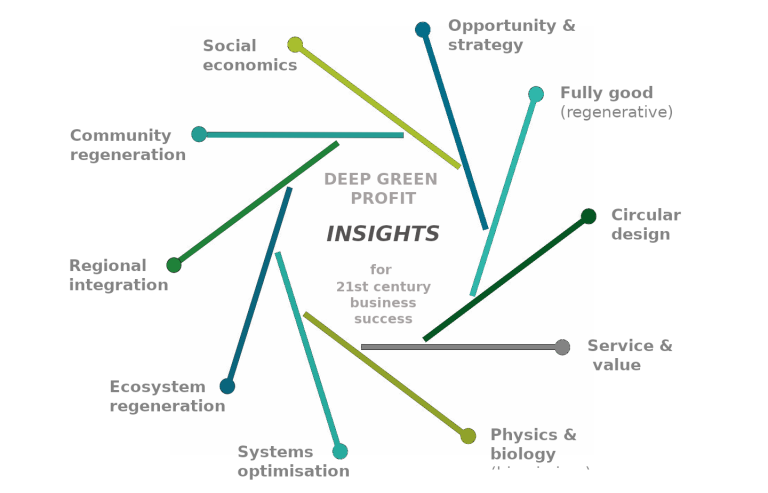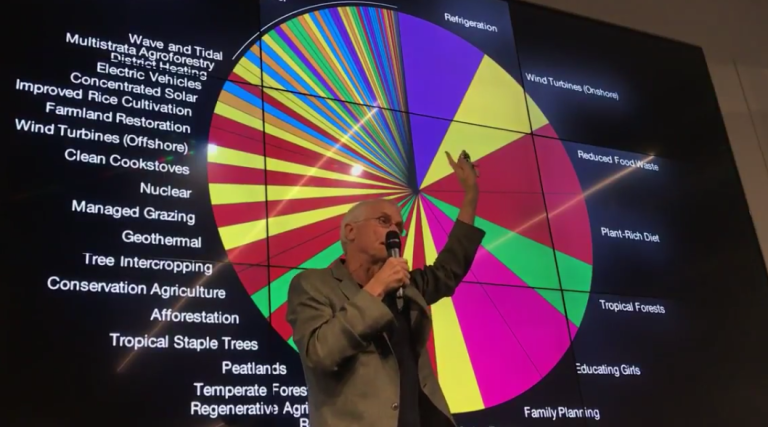Planet of the Regenerators
I watched the “documentary” Planet of the Humans last week at the request of one of my Climactic Collective friends. [Truthfully, it was such a bitter, heavy, out-of-date disappointment that I probably actually eyeballed three quarters of it, dipping in and out as I searched for something (anything!) that was current, relevant and constructive. ]
It was so right and yet so wrong – all at the same time
Yes – solar and wind can’t power the sort of massive centralised grid we inherited from the 20th century AND we’ve known that for decades. That’s why:
- Grids are now being protected and supported by mass battery storage like the South Australian big battery
- Pumped hydro storage is being developed around the world, from Snowy 2.0 to repurposed gold mines
- There’s increased use of geothermal, solar thermal, cogeneration etc. in localtion-specific solutions
- There’s a whole range of efficiency developments from Passive Houses and Living Buildings to LED lighting to REDUCE demand
- Retailers are working with major energy users to put a monetary value on demand reduction in peak periods
- Mainstream energy retailers are increasingly installing independent battery+renewable smart grids in remote locations, instead of stringing in power lines from afar.
Yes – early biofuel and biomass energy attempts were wasteful and destructive AND we’ve used the technology revolution to get a whole lot smarter. That’s why:
- Second and third generation biofuels have been developed from plant waste and algae, not food crops
- Factories and cities are capturing landfill gas to produce power
- Agricultural producers and creating their own energy from effluent.
Yes – anywhere there’s an opportunity to greenwash, make a quick buck or take a free ride, certain ruthless industry players will have a go. That’s why:
- There’s a growing number of community-run renewable energy cooperatives – some of them developing into commercial energy retailers
- The B-corp movement has developed, legitimising ethical alternatives for corporate behaviour
- Crowd funding platforms mean that ethical enterpreneurs don’t need to wait for “market forces”
- Ethical investment alternatives are well-developed around the world.
And what about the realities that were completely ignored?
First up, emissions reduction is a whole-of-economy challenge that will require us to reinvent everything, from agriculture to materials to education.
The Project Drawdown 2020 Review points out that energy generation emissions are only:
- Electricity generation 25%
- Food, agriculture and land use 24%
- Industry 21%
- Transportation 14%
- Buildings 6%
- Other ènergy 10%
This means that any one limitation of any single technology in any single iteration DOES NOT condemn our future.
Drawdown catalogues 76 existing, commercial scalable solutions – solutions that businesses and communities around the world are already putting into action.
They’re solutions that are so accepted and so mainstream that they can be measured and modelled. They’re mostly no-regrets solutions that make the world better in multiple dimensions, delivering on 15 of the 17 UN Sustainable Development Goals.
A fundamental shift is underway that doesn’t get a mention
We know that now is the time to change the relationship between business, ecosystems and communities. And we’re doing it.
We know that the extract/emit/exploit systems that humans have been using since we first moved into cities thousands of years ago are rubbish. And we’re upgrading them.
That’s why global innovators and startup entrepreneurs (Google, Microsoft, Nike, Ford, Unilever, Walmart, Atlassian – to name a tiny sample) have been busy doing business development based on:
- The Natural Step
- Doughnut Economics
- Natural Capitalism
- Biomimicry
- Circular Economy
- Cradle to Cradle Product Innovation
- Systems Thinking
- Systemic Design
A historical docu-drama – maybe
Watching this video, I felt like I was watching a dark historical docu-drama – a period piece from the 20th century – full thinking that seems to belong to that first Earth Day when we thought that “the answers” were about scarcity:
- Consume less
- Recycle
- Impose limits
- Back to the land
We know that the first-generation versions of any solutions aren’t going to be enough. Put an early photo of a “horseless carriage” up against a Tesla EV. Compare Alexander Graham Bell’s first telephone with your smartphone. Compare a 1920s biplane with today’s elctrified flying taxis. Put a photo of a modern solar farm up against Moore’s undated images.
What’s toxic is the level of hopelessness it’s generating
I could almost imagine this “documentary” being scripted and funded by the fossil fuel industry for the specific purpose of creating helplessness, hopelessness and despair. Hypothetically, it’s timing couldn’t be better if it was a deliberate strategy to further deactivate action in communities struggling to cope with the emotional impacts of COVID-19.
It only takes 1 negative story to wipe out 4 positive stories
Humans are biased towards anxiety and gossip – it’s our genetic heritage. So 1 bad news story has BIG impact – and can wipe out the benefits of practical solutions story.
So here are 6 positive stories to help rebalance your psyche:
- Radical Industrialist Ray Anderson, founder of Interface (who have already reached zero emissions and in 2019 launched Climate Takeback) talking about how they do Sustainability in Action
- Paul Hawken, founder of Project Drawdown, talking about reversing global warming and restoring ocean habitats Solutions to Reverse Global Warming
- Bill McDonough, founder of the Cradle to Cradle Product Innovation Institute, talking to Google about Design as Optimism
- Janine Benyus, creator of Biomimicry, talking about Nature’s 3.8 billion years of design brilliance and The promise of biomimicry
- Economist Kate Raworth explaining how A healthy economy is designed to thrive, not grow
- Paul Hawwken AND Janine Benyus talking about Drawdown, Interface AND Biomimicry on Biomimicry as Cooperative Inquiry
Not only will they give you a picture of where we’re going, you might just find a new business, career or community development opportunity that you never knew was possible.
What can you do?
Fear only works as a motivator when it’s combined with immediate, accessible action. Health ads warning about the dangers of smoking work best when they include contact details for a QUIT program.
So one thing you can do is to share (at least) 5 practical, constructive solutions stories.
It could be your favourite from the five videos above. It could be your top solutions podcast episodes. It could be a link to Project Drawdown’s 2020 Review.
If you don’t want to do the sharing directly, put some financial support behind someone whose work you admire.
If you don’t have good news stories of your own, use some of the ones I share here and on Regenerative Business socials.


